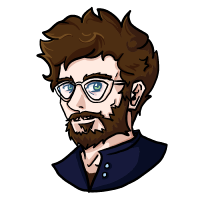00:00:00.030
Rob Howard is a great speaker. Some of you may know him, while others have yet to meet him. He is a Sydney-based developer with a functional UI and DevOps bent, currently working at Culture Amp. According to his Twitter bio, he's into swords, fire, and cats, but thankfully, they are all kept separately—no cats were harmed in the making of this bio. Interestingly, Rob traveled to us on an overnight train from Sydney. Apparently, the train carriage was like it was from 1989, and it wasn't in great condition. While I caught that sort of experience as a teenager, Rob went next level by having a sleeper carriage. Today, his talk is about taking us to the stars—not by train, though. Please welcome Rob Howard!
00:01:19.509
Unfortunately, there seems to be some audio issues. What we just heard was a sampling of things meant to represent Earth and its inhabitants, including greetings from different languages, whale sounds, sounds of air, nature, music, and the steady, regular rasping of distant pulsars. These were once thought to be sources of intelligent life or communication. These recordings were sent aboard the Voyager 1 and Voyager 2 space probes, which were launched in 1977 as part of an ongoing line of space exploration.
00:02:00.840
Voyager 1 and Voyager 2 exist because a fellow named Gary Flanagan discovered a once-in-a-lifetime opportunity to take advantage of a rare planetary alignment in 1965. This alignment allowed the probes to harness the gravity of the planets to change trajectories and speed up their journey from Jupiter to Saturn, then onto Uranus, and Neptune. Voyager 1 diverged early in one direction while Voyager 2 ventured closer to the last two planets. Both probes have now exited the solar system, passing through the heliosphere and heliopause boundary into the interstellar medium. They provided us with much better information about Jupiter's atmospheric composition, weather systems, its rings, and closer images of Saturn and its moons.
00:03:32.350
The Voyager probes were part of a continuation of earlier space probes, such as Pioneer 10 and Pioneer 11, which had gold-anodized plaques attached to them—a message for anyone who might find these probes. This message contained maps of the solar system and the location of pulsars, as well as images of the creators, along with a scale model of the Pioneer probe itself and hydrogen atoms in two different states. The intent was to encode a message that aliens might potentially decipher by using hydrogen atoms as a universal measurement. Carl Sagan chaired the committee to determine what to include on the Voyager probes, continuing the legacy of what they did with Pioneer. Frank Drake proposed the idea to use a phonograph as a medium for this information, believing it would be much more enduring than magnetic tape.
00:05:11.510
A phonograph has grooves that wobble as they are read, which allows for the encoding of vast amounts of information. The Voyager record was made out of copper and gold-plated, containing a collection of recordings curated by a relative of Sagan’s. They created instructions for reading it, including the transition time of hydrogen atoms and binary numbers that detail the solar system's layout, along with instructions for how to play the record itself. It was designed with the understanding that aliens may not have any concept of what a record is, making the assumptions based on the idea that they might be able to see or hear. Although there are many presuppositions involved in sending this message to the stars, the effort reflects our best attempt.
00:06:52.590
Included on the disc were not only the audio samples we've heard but also a multitude of images transformed into sound. Today, we will explore what this means and delve into the science behind sound itself. Sound comprises waves—specifically, compression and rarefaction waves. To understand this concept, I find Slinkys helpful in visualizing sound waves. When one part of a slinky is pushed together, the energy is transferred through the slinky while the particles oscillate. Similarly, sound travels through air as a series of compressions and rarefactions, which our ears interpret as sound. For instance, when a speaker cone moves back and forth, it creates compression energy that travels through the air to our ears.
00:09:30.940
This concept explains why no one can hear you scream in space: sound requires a medium to travel through. A classic experiment illustrates this well. If you sound an alarm clock inside a glass bell and gradually remove the air, the sound diminishes until it's silent. This demonstrates that without air as a medium, sound cannot travel. Transitioning to our main focus, we will use sound waves to represent the recordings in a different format. The waveforms will consist of high points (compressions) and low points (rarefactions), and these waves can be altered to affect how we perceive them. In sound, frequency determines pitch, while amplitude contributes to volume.
00:11:54.300
We can visualize sound waves as numbers, where each wave can be represented as a sequence of heights. By converting sound to a digital format, we can represent it as a string of numbers. For example, the sample rate reflects how many slices are taken each second, while the bit depth indicates the variability of those values. Higher bit depth captures a broader range of sound, leading to higher fidelity. Formats like WAV and MP3 represent the digitization of sound, whereby MP3s compress recordings by removing parts of audio the human ear doesn't perceive well. With this understanding of sound representation, I'll be using Audacity for the remainder of this presentation to demonstrate audio manipulation.
00:14:50.300
Now, let's return to the instructions on the Golden Record and focus on the waveforms. We’ll zoom in on the relevant parts, ignoring sections unlikely to yield useful insights. As we explore the segments that correspond to waveforms, we can examine familiar patterns. By digging deeper, we discover that these patterns represent different audio elements. Some components seem to align with waveform images we saw earlier, suggesting that they correspond to specific audio signals.
00:17:06.810
By further analysis, we might invert the instruction manual to examine the waveforms in a different light, potentially spotting additional similarities. This process allows us to identify key patterns within the audio. Next, we can consider how audio manipulation works. When working with sounds, one important principle is to make many attempts to refine our results. When experimenting, quick feedback is invaluable, enabling swift adjustments to reach our goals. For example, if we set up an environment that automates code execution every time we save changes, we receive immediate feedback that helps us iterate effectively.
00:19:40.000
As we move forward in reconstructing the images from the audio, we will focus on reading and analyzing the contents of the WAV file. Our method involves parsing the audio data into numerical values that represent waveforms. This requires organizing the left and right channels, and we can plot the values on a graph for visualization. It's a straightforward yet powerful first step towards translating sound data back into image data, reconceptualizing how audio can inform visual interpretations.
00:23:29.910
Once we have collected data points, we can manipulate them to produce imagery. For example, we could transform segments from the WAVE file into a visual format resembling a basic image. By identifying changes in amplitude and translating them into pixel brightness, we establish a foundation for constructing pictures. As we enhance this process, we may yield recognizable patterns—Leaning on basic assumptions about the nature of images aids in conceptualizing how sound waves could correlate with visual representations.
00:26:04.400
As we develop a way to synthesize imagery from sound, there are ongoing challenges. Some images yield unexpected outcomes due to variations in the processing techniques used in earlier analog systems. This inquiry remains unfinished, and further refinements will improve the results. The entire process boils down to the transformation of data from sound to visuals, taking advantage of the characteristics inherent in both mediums. I owe tremendous gratitude to my family, particularly my dad and brother, who have collaborated with me on this journey, following through on concepts we have developed together.
00:29:14.000
In conclusion, we have rediscovered how sound functions as pressure waves, with frequency affecting pitch and amplitude influencing volume. We represent sound to computers by converting audio signals into numerical slices, and images onto older televisions are developed through rapidly sweeping beams, tricking our eyes into perceiving a single, connected visual. Images in digital formats operate similarly, as numerical representations of brightness and color come together in a grid form. In 1977, humanity sent a message into space, an optimistic beacon showcasing the vibrancy and variety of our world. As Voyager 1 took its historic photo, 'The Pale Blue Dot,' we reflect on the power of that moment. I would like to share some words from Carl Sagan: 'Consider again that dot—that’s here, that’s home. That’s us, on it—everyone you love, everyone you know, everyone you ever heard of.' Thank you very much for being here today!

























